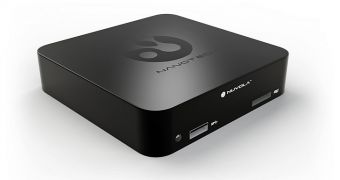NVIDIA originally launched the Tegra 4 system-on-chip as a replacement for Tegra 3, one that would be used in next-generation tablets of 7 inches, 8 inches and 10.1 inches, sometimes even larger.
The SoC ended up having a lower success than Tegra 3, probably because said predecessor had the good luck of riding the momentum of the nascent tablet market.
It didn't help that most owners of Tegra 3 tablet felt satisfied with the performance, enough to decide against upgrading to Tegra 4 despite the obvious superiority.
Thus, NVIDIA must be quite pleased with the recent contract signed with NanoTech Entertainment.
NanoTech won't use the Tegra 4 in tablets, but in a new collection of media players capable of outputting content in 4K quality (3840 x 2160 pixels UHD resolution).
"Tegra 4 provides enormous processing power and realistic graphics to set top boxes," said Glenn Schuster, director of technical marketing for the Mobile business at NVIDIA.
"Its optimized video capabilities, TegraZone games and Miracast support will allow these TV-connected devices to deliver a whole range of home entertainment experiences that are second to none."
Tegra 4 has a 72-core GeForce GPU, four ARM Cortex A-15 cores, and a low power consumption.
NanoTech is currently accepting orders for the new product line, called Nuvola, at nuvola4k.com.
Sales will start later this month, by which time some other consumer products will appear, according to the company.
"After evaluating the market and looking at the competitive landscape, the decision to upgrade our processor to NVIDIA’s Tegra 4 was simple," stated Jeffrey A. Foley, NanoTech CEO.
"Tegra 4 offers native 4K video support in hardware, including support for security and digital rights management with features including HDCP. Beyond 4K, the power of the NVIDIA processor helps us deliver a world-class experience with games, web browsing and a variety of other optimized apps."

 14 DAY TRIAL //
14 DAY TRIAL //